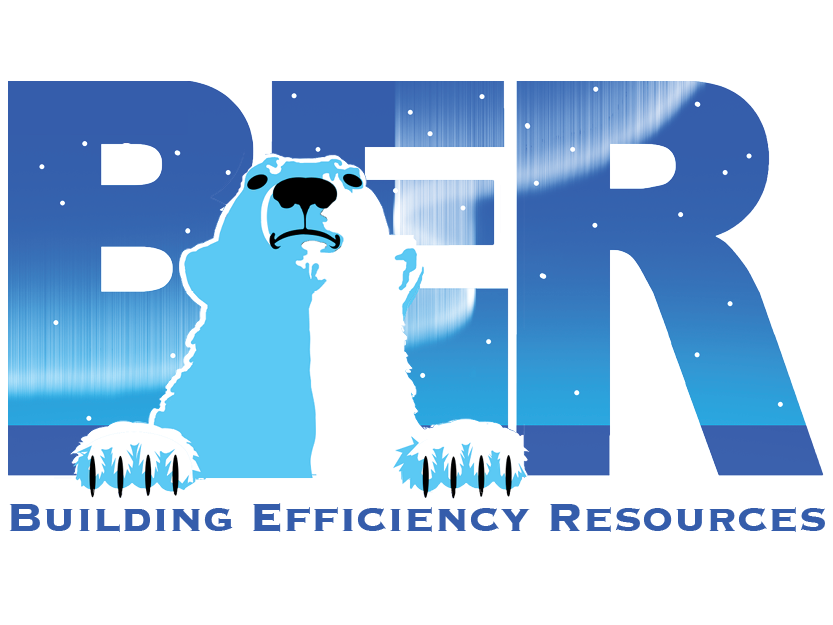The Future of HVAC is Available Now
Pop-quiz, BER Raters: Why is 12,000 btu/hr of cooling capacity referred to as a “ton” of cooling?
Answer: Prior to the age of forced-air, refrigerant/compressor air conditioning technology, buildings were cooled with fans blowing over blocks of ice. Engineers determined that 12kbtu/hr was the expected evaporative cooling over one ton of ice harvested from cold climate frozen lakes, transported and stored in ice houses.
Refrigeration technology has come a long way since the harvesting of ice blocks. While water-based evaporative cooling may still be used in some hot & dry climates, the resulting humidity is problematic for most climates. First invented by Willis Carrier in 1902, vapor compression air-conditioning is the most widely used air-conditioning technology today. However, the design of these vapor-compression air conditioners has changed dramatically since 1902. Heating technology has evolved as well, and BER is excited to help our Raters understand why modern advances in air-source heat pump (ASHP) technology are the cutting edge of the future of space conditioning (and they crush on the HERS Index, too!).
Historically, burning wood was the dominant method of heating dwellings for thousands of years until it was replaced by fossil fuels – primarily coal – in the 1800s. Although conventional fuel-fired space heating technology has evolved – most systems typically operate on natural gas, propane, or fuel oil, and many of these use condensing technology to achieve efficiencies up to 99% – these systems are primed to be challenged by modern, superior efficiency electric-heating systems.
Electric heating is not new. Electric resistance baseboard heat and electric furnaces offer reliable operation and economical up-front equipment cost with superior efficiency to fossil-fuel heating systems (they have a Coefficient of Performance (COP) of 1!) but come with the drawback of typically higher operational costs due to the lower cost per btu from fuel-fired systems. To make up for this deficit, heat pumps have the ability to deliver heat at 2-5 times the efficiency of electric resistance systems (COP 2-5), and thus, helping to even the operational cost advantage of fuel-fired systems.
While theoretical models of heat pump operation date back to the 1700s, and some prototype direct exchange water-source heat pumps (WSHP) and ground-source heat pumps (GSHP) were developed in the 1800s and early 1900s, the first implementation of an ASHP was invented by Robert C. Webber by accident in 1948, when he discovered hot water as a byproduct of a chest freezer and decided to hook it up to a fin radiator and a fan. The utilization of heat pump technology has since greatly expanded. While GSHP/WSHPs offer superior efficiency, they require substantial investment in-ground/water exchange loop/well piping, making them less practical for single-family homes. This is especially the case for high-performance homes with smaller heating/cooling loads for 2 reasons: first, the lower the demand for heating/cooling consumption, the longer the payback for the cost-premium of GSHP/WSHPs; second, while lower-capacity GSHP/WSHPs exist, most of these systems are sized for larger capacity installations. For these reasons, ASHPs are by far the most common choice for SFHs because of their ever-increasing efficiency and the expense involved with the installation of a GSHP.
Due to the extreme outdoor winter temperatures in northern climates, ASHPs were once a more expensive choice for space heating. Conventional units lockout around freezing temperatures, requiring electric resistance backup to maintain capacity, thus making cold-weather expenses in excess compared to fuel-fired systems. However, with cold-climate inverter technology, ASHPs are now practical and cost-efficient in even the coldest regions of the United States. These systems – often referred to as “mini-splits” – have sophisticated compressor/indoor unit variable speed operation through computer algorithm controls that allow for units to operate at much colder temperatures than standard, non-inverter ASHPs. Some mini-split manufacturers offer units that operate even down to -13°F or lower, ensuring that – with proper design and system selection – mini-splits have the capacity to heat a home in even the most extreme outdoor conditions.
While most practitioners think of the term “mini-split” as referring to exclusively the ductless, wall-mounted cassette units, these inverter ASHPs actually have many possible indoor configurations; ductless wall mounted cassettes, ductless ceiling-recessed cassettes, ductless floor-mounted units, as well as a variety of ducted configurations. These systems can be configured in single-zone, one-to-one outdoor-to-indoor unit configurations – which tend to offer the best efficiency ratings – as well as multi-zone configurations where one outdoor unit feeds to several indoor units, which can even be mixed between ducted and ductless configurations. These “multi-split” systems have the ability to control anywhere from two to eight indoor units. Larger multi-split units used in commercial and multifamily applications are typically referred to as Variable Refrigerant Flow (VRF) systems and add an additional benefit of allowing heating and cooling at the same time, which is useful for buildings in cold climates with high internal and solar heat gains that may require air conditioning even in the dead of winter.
While some Raters might think, “So what? I’ve known about mini-splits for years. Builders won’t use them because they’re too expensive.” Think again. If designed properly by selecting appropriately sized units with a thoughtful layout, the equipment expense can potentially be lower than a conventional furnace/AC combo when factoring in the potential to eliminate ductwork installation. Just think… no more failed duct tests! However, as we discussed in our previous article in this series, getting the sizing right based on proper load calculations is critical. This is arguably even more important for mini-splits, as the designer must consider a balance between sufficient capacity at low temperatures, along with the cooling capacity to ensure minimal short-cycling and proper dehumidification. Also, don’t assume ductless necessarily means increased comfort. The lack of conditioning distribution, especially to serve solar gain in the cooling season, can be a drawback of ductless systems. This further reinforces the need for informed, professional design.
Thus, while inverter ASHPs are indeed great technologies, and they do have some benefit of variable capacity operation, don’t assume your builders or their HVAC contractors are going to get it right. Go back and read our last article – an amazing project can turn into a costly, uncomfortable burden if the design is compromised. That’s why we encourage you to turn to BER ProServ for your HVAC design needs. We specialize not only in ACCA Manual J, S, and D calculations, but also inverter heat pump selection and distribution design. We work with all brands – Mitsubishi, Fujitsu, Daikin, LG, Carrier/Bryant, etc., and can help your clients achieve the most cost-effective and energy-efficient design for their projects. As new HVAC technology emerges, it can pose a challenge for energy modeling by altering the inputs and calculations we make for each home. Further, when ACCA Standard 310 makes HVAC grading by Raters a standard practice, there may be even further confusion about the appropriate way to handle these newer systems. We want you to know that BER is ready to answer all your questions about the newest HVAC technologies. As the nation’s largest HERS Rater Provider, we have seen just about every technology out there.
In next month’s article, we will discuss ACCA Standard 310, its availability, and what it requires (and does not require) from HERS Raters.

